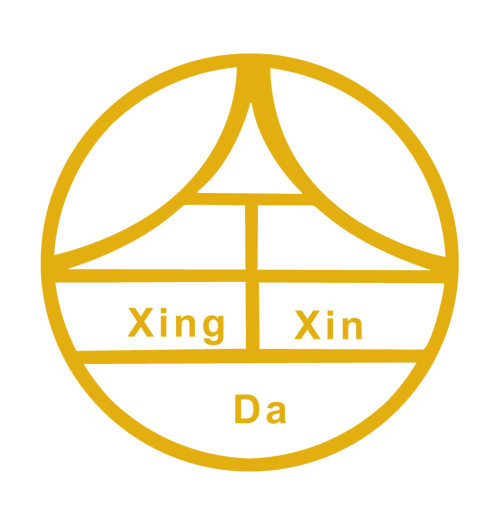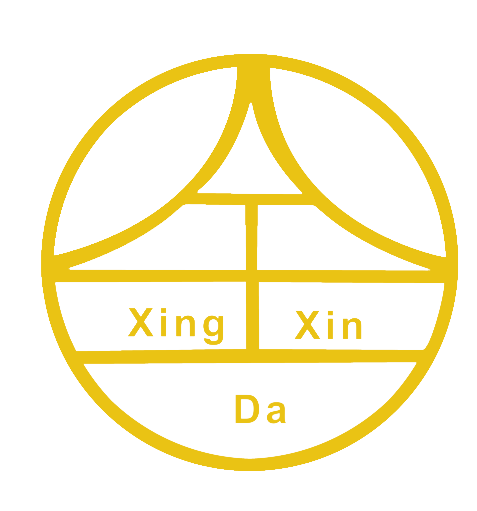การเพิ่มขึ้นของงานปักแบบกำหนดเองในวงการแฟชั่น
จากผลิตมวลชนไปสู่การปรับแต่งเฉพาะบุคคล
ในปัจจุบัน การผลิตแบบจำนวนมากไม่ได้เป็นสิ่งที่เคยเป็นมาอีกแล้ว ผู้คนต้องการสิ่งที่แตกต่างเมื่อพวกเขาเดินออกจากบ้าน นั่นจึงเป็นเหตุผลที่การปักลายแบบเฉพาะเริ่มได้รับความนิยมมากขึ้นในช่วงหลัง มีหลายคนที่ชื่นชอบการปรับแต่งเสื้อผ้าของตนเอง ทำให้เสื้อผ้าชิ้นนั้นกลายเป็นเอกลักษณ์จริงๆ มีตัวเลขบางตัวที่คาดการณ์ว่าเทรนด์แฟชั่นเฉพาะบุคคลนี้อาจเติบโตจนแตะระดับ 132.3 พันล้านดอลลาร์ภายในปี 2035 ซึ่งก็เป็นเรื่องที่เข้าใจได้ เนื่องจากไม่มีใครอยากสวมใส่สิ่งที่คนอื่นๆ ต่างก็มีกันอีกต่อไป ตัวอย่างเช่น SÅder Studio พวกเขาสามารถเกาะกระแสนี้ได้ค่อนข้างดี โดยการเปิดโอกาสให้ลูกค้าปรับแต่งเสื้อผ้าให้ตรงกับความต้องการของตนเองอย่างแท้จริง แน่นอนว่า ไม่ใช่ทุกคนที่จะสามารถซื้อเสื้อผ้าแบบเฉพาะบุคคลได้ตลอดเวลา แต่อย่างน้อยตอนนี้ ก็มีทางเลือกสำหรับผู้ที่ต้องการสิ่งที่พิเศษ โดยไม่ต้องใช้เงินมากจนเกินไป
บทบาทของโซเชียลมีเดียในการผลักดันแนวโน้มงานปัก
อินสตาแกรมและติ๊กต็อกมีบทบาทสำคัญในการเผยแพร่เทรนด์งานปักผ้าในช่วงนี้ มีผู้คนจำนวนมากที่ชื่นชอบการอวดเสื้อผ้าที่ถูกปักแบบพิเศษของตัวเองบนแพลตฟอร์มที่เน้นรูปภาพเป็นหลัก ซึ่งช่วยให้ได้รับไลก์และแชร์จำนวนมาก สิ่งที่เริ่มต้นจากออนไลน์มักจะกลายมาเป็นแฟชั่นจริง ๆ ที่ผู้คนสวมใส่ออกไปในชีวิตประจำวัน ส่งผลให้ความนิยมงานปักแบบสั่งทำพิเศษเพิ่มขึ้น นอกจากนี้ กระแสของอินฟลูเอนเซอร์ก็มีบทบาทสำคัญเช่นกัน เมื่อบุคคลที่มีชื่อเสียงร่วมมือกับแบรนด์ในการนำเสนอไอเทมปักแบบเฉพาะ ทันใดนั้นทุกคนก็ต้องการสิ่งที่พวกเขากำลังสวมใส่อยู่ สิ่งนี้จึงก่อให้เกิดปรากฏการณ์ไวรัลที่เราเห็นได้บ่อยครั้งบนสื่อโซเชียลมีเดียในปัจจุบัน
การร่วมมือกับคนดังด้านการปักผ้าแบบเฉพาะเจาะจง
เมื่อชื่อดังในวงการบันเทิง จับมือกับแบล็อกแฟชั่น พวกเขาช่วยทําให้การแต่งผ้าแต่งแต่งตัวได้ถูกนํามาสู่จุดประกาย การร่วมมือกับคนดังเหล่านี้ ทําให้การแต่งผ้าแต่งแต่งตามสั่งดูมีค่ามากขึ้น สําหรับผู้บริโภคที่ต้องการเลียนแบบลักษณะที่แตกต่างกันของดาราที่พวกเขาชื่นชม ยกตัวอย่างเช่น งานของริฮานนา กับกูชิ ครับ ครับ การออกแบบที่กล้าหาญของริฮานนา ที่มีการแต่งแต่งที่ซับซ้อน ถูกขายหมดในไม่กี่นาทีบนอินเตอร์เน็ต การทําข้อตกลงที่คล้ายกันระหว่าง A-listers และบ้านหรูหรามักจะส่งผลให้มีจํานวนการขายที่ดีขึ้นและการยอมรับที่กว้างกว่าสําหรับแบรนด์ที่เกี่ยวข้อง อะไรทําให้การร่วมมือเหล่านี้มีประสิทธิภาพมากนัก พวกเขาปล่อยให้ใบหน้าดังๆ สร้างบุคลิกภาพของตัวเอง ลงตรงในสิ่งสร้างที่ขีดขน ซึ่งสร้างความไว้วางใจกับผู้ซื้อ ขณะที่สร้างความรู้สึกที่ต้องการของสิ่งที่เป็นพิเศษและพิเศษ ในตลาดที่เต็มไปด้วยคน
การปักผ้าแบบเฉพาะเจาะจงกับการปรับแต่งทั่วไป
การกำหนดบริการปักผ้าแบบ Bespoke ที่แท้จริง
อะไรคือสิ่งที่ทำให้การปักผ้าแบบเบสโปก (bespoke) แท้จริงแตกต่างจากการสั่งทำพิเศษทั่วไป? มันคือการสร้างสิ่งที่มีความเป็นส่วนตัวอย่างแท้จริงให้กับลูกค้าแต่ละคน เมื่อใครสักคนเลือกใช้บริการแบบเบสโปก มักจะเริ่มต้นด้วยการนั่งพูดคุยกับช่างปักผ้าแบบตัวต่อตัวก่อน บทสนทนาเหล่านี้ช่วยให้เข้าใจได้ว่ารายละเอียดด้านการออกแบบและลักษณะโดยรวมแบบไหนที่สำคัญที่สุดสำหรับลูกค้า สิ่งที่ได้คืองานปักผ้าที่บอกเล่าเรื่องราวของเจ้าของมากกว่าแค่ความสวยงามที่เห็นได้ตามร้านค้า ร้านค้าหลายแห่งจัดให้มีการนัดหมายส่วนตัว โดยช่างฝีมือจะร่างแบบเฉพาะให้กับลูกค้าแต่ละคน ซึ่งเป็นสิ่งที่คุณจะไม่มีวันพบเห็นบนชั้นวางสินค้าของร้านใดร้านหนึ่ง ผู้ที่เคยผ่านประสบการณ์นี้มักพูดถึงความรู้สึกที่ดีกว่าเมื่อรู้ว่าไม่มีใครสวมใส่หรือเป็นเจ้าของสิ่งที่สร้างขึ้นนี้มาก่อน ซึ่งทำให้การใช้เวลารวมถึงค่าใช้จ่ายเพิ่มเติมนั้นคุ้มค่า
ความแตกต่างเรื่องคุณภาพ: งานฝีมือ vs. งานเครื่องจักร
เมื่อเปรียบเทียบงานปักแบบทำมือกับแบบทำด้วยเครื่องจักร ไม่มีใครปฏิเสธได้ว่างานฝีมือที่ทำด้วยมนุษย์นั้นมีสิ่งที่พิเศษเฉพาะตัว ผู้คนใช้เวลานานหลายชั่วโมงในการสร้างสรรค์ผลงานเหล่านี้ โดยปักลวดลายที่ซับซ้อนอย่างระมัดระวัง ซึ่งเครื่องจักรไม่สามารถเลียนแบบได้ ผู้บริโภคจำนวนมากเริ่มสังเกตเห็นความแตกต่างนี้เช่นกัน พวกเขาต้องการสิ่งของที่คงทนและสวยงามไปได้นานหลายปี แทนที่จะเสียหายหลังซักเพียงไม่กี่ครั้ง ผู้เชี่ยวชาญด้านงานฝีมือส่วนใหญ่เห็นพ้องกันว่า ของที่ทำด้วยมือโดยทั่วไปมักจะคงทนกว่าสินค้าที่ผลิตจากโรงงาน ซึ่งบางครั้งอาจขาดรายละเอียดอันประณีต และไม่สามารถใช้งานได้ดีเท่ากัน เมื่อแต่ละเข็มถูกปักด้วยมือของมนุษย์ มันก็เล่าเรื่องราวของตัวเอง และความใส่ใจพิเศษนี้ก็แสดงให้เห็นอย่างชัดเจนว่าทำไมของเหล่านี้จึงยังคงความสวยงามและการใช้งานได้ดีแม้เวลาจะผ่านไป
กระบวนการออกแบบสำหรับแผ่นป้ายปักที่มีเอกลักษณ์
การสร้างตราปักแบบเฉพาะเริ่มต้นด้วยการเข้าใจอย่างถ่องแท้ว่าลูกค้าต้องการอะไร เราเริ่มต้นด้วยการนั่งพูดคุยกับลูกค้าเพื่อระดมไอเดียพื้นฐานเกี่ยวกับสี รูปร่าง และลักษณะโดยรวม จากนั้นนักออกแบบของเราจะเริ่มทำงานโดยใช้โปรแกรมคอมพิวเตอร์ในการร่างแบบของตราปักเบื้องต้น พวกเขาจะปรับแต่งและพัฒนาแบบร่างเหล่านี้หลายครั้งตามความชอบหรือข้อเสนอแนะของลูกค้า เมื่อทุกฝ่ายเห็นพ้องต้องกันว่าเป็นแบบสุดท้ายแล้ว เราก็จะเริ่มขั้นตอนการปักจริง เครื่องจักรปักอัตโนมัติเฉพาะทางจะเข้ามามีบทบาทในขั้นตอนนี้ โดยจัดวางเส้นด้ายแต่ละเส้นอย่างระมัดระวังตามข้อกำหนดที่กำหนดไว้ อย่างไรก็ตามเราติดตามผลและรับฟังข้อเสนอแนะจากลูกค้าตลอดกระบวนการ บางครั้งจำเป็นต้องมีการปรับเปลี่ยนเล็กๆ น้อยๆ หลังจากได้เห็นสีที่เข้ากันจริงหรือปรับตำแหน่งเมื่อเห็นว่าลายปักจะออกมาเป็นอย่างไรบนผ้า การสื่อสารที่ต่อเนื่องและปรับเปลี่ยนได้ตลอดนี้คือสิ่งที่ทำให้ตราปักเฉพาะของลูกค้าออกมาตรงตามที่พวกเขาต้องการอย่างแท้จริง
ประเภทของเทคนิคการเย็บผ้าแบบกำหนดเอง
ป้ายเย็บผ้าด้วยมือสำหรับความโดดเด่นในระดับหรูหรา
แฟชั่นระดับหรูได้ให้ความสำคัญกับผ้าปักมือเป็นพิเศษ เนื่องจากลวดลายที่สวยงามและรายละเอียดเล็กๆ น้อยๆ ที่ถูกใส่ใจในการผลิต นักออกแบบระดับสูงต่างต้องการผ้าปักประเภทนี้ เพราะสามารถเพิ่มความแตกต่างให้กับการออกแบบเสื้อผ้าได้ ลองนึกถึงเทคนิคอย่างการปักเส้นซาติน (satin stitch) หรือการปักแบบฝรั่งเศส (French knot) ที่ใช้เวลามากในการทำให้ออกมาสมบูรณ์แบบ การทำงานลักษณะนี้จำเป็นต้องอาศัยทักษะและความชำนาญจากช่างฝีมือที่มีประสบการณ์โดยตรง ซึ่งเป็นสิ่งที่เครื่องจักรทั่วไปไม่สามารถทำได้ แบรนด์อย่าง Gucci และ Chanel ต่างนำผ้าปักมือแบบนี้มาใช้ในผลิตภัณฑ์ล่าสุดของตน เพื่อแสดงถึงความรู้สึกสุดพิเศษที่เชื่อมโยงกับแฟชั่นระดับแนวหน้า คนทั่วไปชื่นชอบผ้าปักเหล่านี้ไม่เพียงเพราะความสวยงามหรูหรา แต่ยังเพราะแต่ละชิ้นสามารถบอกเล่าเรื่องราวเฉพาะตัวผ่านลวดลายและสีสันที่ใช้ในการปัก
เหล็กปักติดด้วยความร้อนสำหรับปรับแต่งอย่างรวดเร็ว
แผ่นปักติดผ้าด้วยความร้อนนั้นค่อนข้างสะดวกมือเมื่อมีคนต้องการตกแต่งเสื้อผ้าหรือสิ่งของต่าง ๆ อย่างรวดเร็ว ซึ่งเป็นเหตุผลที่ทำให้แผ่นปักประเภทนี้ได้รับความนิยมอย่างมากในวงการแฟชั่นแนวคัสชวลในปัจจุบันนี้ ผู้ใช้เพียงแค่นำแผ่นปักวางบนผ้าแล้วใช้เตารีดกดให้ติด แค่นี้เสื้อผ้าก็จะดูอัปเดตใหม่ขึ้นมาทันที โดยไม่ต้องมีทักษะการปักหรือเย็บผ้าแต่อย่างใด จุดเด่นหลักของแผ่นปักเหล่านี้คือความง่ายในการใช้งาน แม้ว่าผู้ใช้บางรายอาจสังเกตว่าแผ่นปักแบบนี้มักจะไม่คงทนเท่ากับงานปักแบบดั้งเดิมก็ตาม อย่างไรก็ตาม สิ่งที่ทำให้แผ่นปักเหล่านี้ยังคงได้รับความนิยมอย่างต่อเนื่องจากกลุ่มคนรักแฟชั่นแนวสบาย ๆ คือความหลากหลายของสไตล์และลวดลายที่มีให้เลือกมากมาย ตั้งแต่โลโก้ทีมกีฬาไปจนถึงรูปทรงสัตว์น่ารัก ๆ มีให้เลือกครบถ้วนสำหรับทุกไลฟ์สไตล์ที่ต้องการปรับลุคเสื้อผ้าให้ดูดีขึ้นอย่างรวดเร็วโดยไม่ต้องใช้ทั้งเงินหรือเวลาจำนวนมาก
นวัตกรรมการ剌ลวดดิจิทัล
การปักแบบดิจิทัลได้เปลี่ยนแปลงเกมของงานปักที่สั่งทำพิเศษ โดยนำเสนอระดับของรายละเอียดและความอิสระทางศิลปะที่เป็นไปไม่ได้เมื่อก่อน ด้วยซอฟต์แวร์ที่ทันสมัยอยู่แค่ปลายนิ้ว นักออกแบบสามารถทดลองสร้างลวดลายที่ซับซ้อนและผสมสีต่าง ๆ ได้ในแบบที่หากทำด้วยมือจะต้องใช้เวลานานหลายชั่วโมง ความแม่นยำของเครื่องมือดิจิทัลเหล่านี้ช่วยให้แม้แต่แบบที่มีรายละเอียดสูงมากก็ออกมาคมชัดและดูเป็นมืออาชีพ ไม่ว่าจะผลิตเพียงชิ้นเดียวหรือหลายพันชิ้น นอกจากนี้ เรายังได้เห็นการพัฒนาที่น่าตื่นเต้นในช่วงไม่กี่ปีที่ผ่านมา เช่น ลูกเล่นเอฟเฟกต์แบบ 3 มิติ และคุณสมบัติ AR ที่แบรนด์แฟชั่นชั้นนำเริ่มนำมาใช้ในคอลเลกชันของตน สิ่งที่น่าสนใจคือ ความก้าวหน้าทางเทคโนโลยีเหล่านี้กำลังขับเคลื่อนขอบเขตให้ก้าวไปไกลเกินสิ่งที่งานฝีมือแบบดั้งเดิมจะทำได้ และเปิดโอกาสใหม่ ๆ ทั้งหมดให้กับศิลปินด้านสิ่งทอทั่วโลก
แนวทางที่ยั่งยืนในงานปักยุคใหม่
เส้นด้ายที่เป็นมิตรต่อสิ่งแวดล้อมและวัสดุออร์แกนิก
การปักแบบยั่งยืนได้รับการส่งเสริมอย่างแท้จริงจากด้ายที่เป็นมิตรต่อสิ่งแวดล้อมและวัสดุออร์แกนิกที่ช่วยอนุรักษ์โลก ทางเลือกเหล่านี้ช่วยลดการปล่อยก๊าซคาร์บอนเมื่อเทียบกับทางเลือกดั้งเดิม เนื่องจากวัสดุหลายชนิดมาจากพืชที่สามารถเติบโตขึ้นใหม่ได้ตามธรรมชาติ แทนที่จะพึ่งพาเชื้อเพลิงฟอสซิล บริษัทอย่าง Patagonia และ Stella McCartney ต่างเป็นผู้นำในการนำวัสดุออร์แกนิกมาใช้ในงานปักของพวกเขา สิ่งที่น่าสนใจคือ แบรนด์เหล่านี้ไม่ได้แค่พูดถึงความยั่งยืนเท่านั้น แต่ยังลงมือปฏิบัติตามอย่างจริงจัง โดยเลือกใช้ผ้าที่ไม่ก่อให้เกิดความเสียหายต่อระบบนิเวศในการผลิต และเรายังไม่ได้เป็นเพียงกลุ่มคนเดียวที่สนใจเรื่องนี้ ผลการศึกษาล่าสุดของ Nielsen พบว่าประมาณสามในสี่ของประชากรทั่วโลกยินดีปรับเปลี่ยนพฤติกรรมการซื้อของหากหมายความว่าจะเป็นมิตรต่อสิ่งแวดล้อมมากขึ้น สิ่งนี้แสดงให้เห็นอย่างชัดเจนว่ายังมีช่องว่างในตลาดสำหรับเสื้อผ้าที่ถูกผลิตขึ้นด้วยเจตนารมณ์ที่เป็นมิตรต่อสิ่งแวดล้อม
การออกแบบลวดลายการปักแบบไม่เกิดขยะ
วงการปักผ้าเริ่มให้ความสำคัญกับการออกแบบแบบไม่ทิ้งเศษผ้า โดยนักออกแบบต้องพยายามจัดวางแพทเทิร์นให้เหมาะสมที่สุดเพื่อลดเศษผ้าที่เกิดขึ้น แบรนด์อย่าง Eileen Fisher และ Tonle ได้มีความก้าวหน้าอย่างชัดเจนในด้านนี้ โดยใช้เทคนิคการออกแบบที่เป็นมิตรต่อสิ่งแวดล้อม ซึ่งช่วยให้ผ้าจำนวนมากไม่ถูกนำไปทิ้งในหลุมฝังกลบ สิ่งที่น่าสนใจคือ แนวทางนี้ไม่เพียงแค่ดีต่อโลกเท่านั้น แต่ยังตอบโจทย์พฤติกรรมผู้บริโภคในปัจจุบันที่ต้องการให้เสื้อผ้าของตนถูกผลิตอย่างมีความรับผิดชอบมากขึ้น เราได้เห็นการเปลี่ยนแปลงนี้ด้วยตัวเองจากงานแสดงสินค้าในช่วงไม่กี่ปีที่ผ่านมา ซึ่งความยั่งยืนกลายเป็นสิ่งที่คาดหวังจนแทบจะกลายเป็นมาตรฐาน แทนที่จะถูกมองว่าเป็นเรื่องพิเศษอีกต่อไป เมื่อผู้คนต่างตระหนักมากขึ้นว่าเกิดอะไรขึ้นเบื้องหลังการผลิตในอุตสาหกรรมแฟชั่น พวกเขาก็เลือกสนับสนุนบริษัทที่ลงมือปฏิบัติจริงในเรื่องแนวทางที่เป็นมิตรต่อสิ่งแวดล้อมตลอดห่วงโซ่การผลิต
ความทนทานในฐานะกลยุทธ์แฟชั่นที่ยั่งยืน
เมื่อพูดถึงการยืดอายุการใช้งานของเสื้อผ้า ปัจจัยด้านความทนทานของการปักถือเป็นสิ่งสำคัญอย่างมากในอุตสาหกรรมแฟชั่นที่ยั่งยืน เสื้อผ้าที่มีความแข็งแรงทนทานจะสามารถสวมใส่ได้นานขึ้น ซึ่งหมายความว่าผู้บริโภคไม่จำเป็นต้องเปลี่ยนซื้อใหม่บ่อยครั้ง ที่จริงแล้ว ผู้คนส่วนใหญ่ก็ชอบของที่ใช้ได้นานอยู่แล้ว จากการสำรวจของ McKinsey ล่าสุดพบว่า ประมาณ 60 เปอร์เซ็นต์ของผู้ตอบแบบสอบถามให้ความสำคัญกับความทนทานของสินค้ามากกว่าประเด็นที่ว่าสินค้านั้นเป็นเทรนด์ใหม่ล่าสุดหรือไม่ ตัวอย่างเช่น แบรนด์ Patagonia ที่เน้นการผลิตเสื้อผ้าที่มีการปักที่ทนทาน เพราะบริษัททราบดีว่าลูกค้าต้องการเสื้อผ้าที่ยังคงสภาพดีแม้จะใช้งานมาหลายปี บริษัทจึงลงทุนในผ้าที่มีความแข็งแรง และใส่ใจในรายละเอียดต่าง ๆ ระหว่างกระบวนการผลิต สิ่งที่เราเห็นได้จากกรณีนี้คือแบรนด์ต่าง ๆ เริ่มกำหนดมาตรฐานใหม่ในแง่ของการปฏิบัติที่เป็นมิตรต่อสิ่งแวดล้อม บริษัทต่าง ๆ กำลังรับฟังสิ่งที่ผู้บริโภคต้องการในปัจจุบัน นั่นคือสินค้าที่มีคุณภาพ และไม่พังเสียหายหลังจากการซักเพียงไม่กี่ครั้ง
การบูรณาการงานปักพิมพ์ 3D
โลกแห่งงานปักกำลังได้รับการยกระดับครั้งใหญ่ด้วยเทคโนโลยีการพิมพ์แบบ 3 มิติ เมื่อศิลปินนำสองแนวทางนี้มารวมกัน พวกเขาก็สามารถสร้างลวดลายที่มีรายละเอียดสูงมาก ซึ่งเป็นไปได้ยากหรือเป็นไปไม่ได้เลยด้วยวิธีการปักแบบดั้งเดิม เราได้เห็นระดับความเฉพาะตัวและรายละเอียดที่ละเอียดอ่อนเกิดขึ้นจากแนวทางผสมผสานนี้ โดยเฉพาะอุตสาหกรรมแฟชั่นเริ่มให้ความสนใจมากขึ้น เนื่องจากลูกค้าต้องการสินค้าที่รู้สึกว่าเป็นเอกลักษณ์เฉพาะตัว มากกว่าจะเป็นสินค้าที่ผลิตจำนวนมาก ทั้งแบรนด์ใหญ่และเล็กต่างก็ทดลองสิ่งที่เป็นไปได้ในด้านนี้ ลองดูสิ่งที่นักออกแบบบางคนทำอยู่ในช่วงนี้ เขาเหล่านั้นนำองค์ประกอบที่พิมพ์ด้วยเครื่องพิมพ์ 3 มิติมาผสมผสานเข้ากับผ้าปักแบบดั้งเดิมโดยตรง สร้างความแตกต่างที่น่าสนใจระหว่างพื้นผิวเรียบกับรอยปักที่มีลวดลายพื้นผิว สิ่งที่ทำให้การผสมผสานนี้ได้ผลดีคือการเพิ่มมิติและความลึกให้กับสิ่งที่เคยแบนราบมาก่อน นอกจากนี้ ผ้าปักที่ถูกพัฒนาเหล่านี้ยังมีประโยชน์ใช้สอยมากกว่าแค่การตกแต่งอีกด้วย
เครื่องมือปรับแต่งความจริงเสริม
เทคโนโลยีความเป็นจริงเสริมหรือ AR กำลังเปลี่ยนวิธีการสำหรับผู้ที่ต้องการเพิ่มลวดลายปักแบบพิเศษให้กับเสื้อผ้าของตนเอง ด้วยเทคโนโลยี AR ผู้ซื้อสามารถมองเห็นได้จริงว่าลวดลายที่ซับซ้อนเหล่านั้นจะออกมาเป็นอย่างไรเมื่ออยู่บนเสื้อผ้าแต่ละชิ้น ก่อนที่จะตัดสินใจซื้อ นอกจากนี้ ประสบการณ์ยังดีขึ้นกว่าเดิม เพราะลูกค้าสามารถทดลองตัวเลือกต่าง ๆ ได้หลากหลาย เช่น เปลี่ยนสีลวดลาย ปรับตำแหน่งของลวดลาย หรือดูว่าองค์ประกอบต่าง ๆ เข้ากันอย่างไร ตัวอย่างเช่น Patchmakers USA พวกเขาได้เริ่มนำ AR เข้ามาเป็นส่วนหนึ่งในกระบวนการทำให้สินค้าถูกปรับแต่งตามความต้องการของลูกค้า และมันก็สร้างความแตกต่างให้กับลูกค้าของพวกเขาอย่างแท้จริง อย่างไรก็ตาม เครื่องมือ AR เหล่านี้ไม่ได้ทำให้การช้อปปิ้งสนุกขึ้นเท่านั้น เมื่อผู้ซื้อสามารถมองเห็นรายละเอียดของสิ่งที่ตัวเองกำลังจะได้รับอย่างชัดเจน พวกเขามักจะรู้สึกพึงพอใจกับการซื้อของมากขึ้น และส่งสินค้าคืนน้อยลงด้วย เพราะไม่มีใครอยากได้รับความประหลาดใจเมื่อแกะกล่องสินค้าที่สั่งซื้อออนไลน์มา
ผ้าอัจฉริยะพร้อมวงจรปัก
วงจรอิเล็กทรอนิกส์แบบปักบนผ้าอัจฉริยะนั้น ถือเป็นสิ่งที่น่าตื่นเต้นมากสำหรับผู้ที่ทำงานด้านการปักผ้าแบบเฉพาะในปัจจุบัน โดยหลักการพื้นฐานคืออุปกรณ์อิเล็กทรอนิกส์จะถูกถักทอเข้าไปในเนื้อผ้าเองเลย ซึ่งช่วยให้เกิดฟังก์ชันที่หลากหลาย เช่น ไฟในตัว เซ็นเซอร์ที่สามารถตรวจจับสิ่งต่าง ๆ หรือแม้กระทั่งการส่งข้อมูลผ่านเนื้อผ้าได้ นักออกแบบแฟชั่นเริ่มมองเห็นโอกาสที่หลากหลายจากตรงนี้ ตั้งแต่เสื้อผ้าที่สามารถตรวจจับอัตราการเต้นของหัวใจหรือข้อมูลสุขภาพอื่น ๆ ไปจนถึงชุดที่สามารถเปลี่ยนสีได้ตามสภาพแวดล้อมที่อยู่รอบตัว จากมุมมองทางเทคนิค การสร้างวงจรปักเหล่านี้หมายถึงการผสมผสานเทคนิคการเย็บปักทั่วไปเข้ากับเส้นด้ายที่มามีคุณสมบัติในการนำไฟฟ้า ซึ่งการผสมผสานนี้ทำให้เกิดทั้งความสวยงามและการใช้งานในรูปแบบใหม่ที่เราไม่เคยเห็นมาก่อน อย่างไรก็ตามยังมีงานอีกมากที่ต้องทำ โดยเฉพาะปัญหาเรื่องความทนทาน ต้นทุนที่ยังสูง และการที่ผู้บริโภคยังไม่คุ้นเคยกับการสวมใส่เทคโนโลยีในเสื้อผ้า แต่ในระยะยาว ผู้เชี่ยวชาญหลายคนเชื่อว่าปัญหาเหล่านี้จะค่อย ๆ หมดไปเมื่อผู้ผลิตค้นพบวิธีการผลิตที่ดีขึ้น ทำให้ผ้าอัจฉริยะกลายเป็นส่วนหนึ่งของอุตสาหกรรมการปักแบบเฉพาะที่ใหญ่ขึ้นกว่าเดิมมาก
สารบัญ
-
การเพิ่มขึ้นของงานปักแบบกำหนดเองในวงการแฟชั่น
- จากผลิตมวลชนไปสู่การปรับแต่งเฉพาะบุคคล
- บทบาทของโซเชียลมีเดียในการผลักดันแนวโน้มงานปัก
- การร่วมมือกับคนดังด้านการปักผ้าแบบเฉพาะเจาะจง
- การปักผ้าแบบเฉพาะเจาะจงกับการปรับแต่งทั่วไป
- การกำหนดบริการปักผ้าแบบ Bespoke ที่แท้จริง
- ความแตกต่างเรื่องคุณภาพ: งานฝีมือ vs. งานเครื่องจักร
- กระบวนการออกแบบสำหรับแผ่นป้ายปักที่มีเอกลักษณ์
- ประเภทของเทคนิคการเย็บผ้าแบบกำหนดเอง
- ป้ายเย็บผ้าด้วยมือสำหรับความโดดเด่นในระดับหรูหรา
- เหล็กปักติดด้วยความร้อนสำหรับปรับแต่งอย่างรวดเร็ว
- นวัตกรรมการ剌ลวดดิจิทัล
- แนวทางที่ยั่งยืนในงานปักยุคใหม่
- เส้นด้ายที่เป็นมิตรต่อสิ่งแวดล้อมและวัสดุออร์แกนิก
- การออกแบบลวดลายการปักแบบไม่เกิดขยะ
- ความทนทานในฐานะกลยุทธ์แฟชั่นที่ยั่งยืน
- การบูรณาการงานปักพิมพ์ 3D
- เครื่องมือปรับแต่งความจริงเสริม
- ผ้าอัจฉริยะพร้อมวงจรปัก





